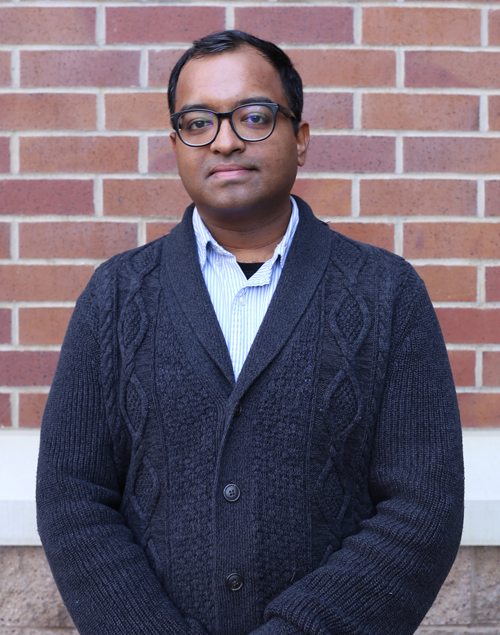NSF Recognizes Banerjee with CAREER Award

March 9, 2022 - Tirtha Banerjee, assistant professor of civil and environmental engineering, has earned a Faculty Early Career Development (CAREER) award from the National Science Foundation's Division of Atmospheric & Geospace Sciences and the Directorate For Geosciences. The CAREER designation is NSF’s most prestigious award in support of early career faculty who have the potential to serve as academic role models in research and education.
Banerjee will receive $600,000 over five years from the NSF Physical and Dynamic Meteorology Program for his research efforts to understand the role of turbulent fluid mechanics in wildland fire behavior inside the forest canopy environment. Banerjee uses fluid dynamics to develop physics-based models that can help predict the path of fires by simulating airflow along with the movement of the blaze itself. These dynamics are governed by turbulence -- nonlinear and chaotic phenomena where a range of multiscale eddies, or circular flow structures, help transfer mass, momentum and energy, and mix them across space. The physics of turbulent flows is important for a range of applications from engineering to meteorology, atmospheric science to biology, and energy applications to geophysical flows.
“Wildfires have become increasingly more destructive with changing patterns of climate and land use,” said Banerjee. “Yet, our understanding of the physical processes governing wildland fire behavior remains limited. Knowing more about the physical and dynamic meteorology of these fires is necessary to develop mitigation strategies such as prescribed burns and forest thinning.”
In certain circumstances, surface fires occurring on a forest floor can ascend vertically, damaging the forest canopy. If conditions are favorable, the fire can also spread horizontally tree-to-tree across the canopy, becoming a much higher intensity crown fire. Banerjee plans to characterize the mechanisms of turbulent wind flow in the forest canopy during wildfires. His team will use sensors that can measure turbulent wind fields in the vicinity of experimental controlled fires both in the laboratory and the field, that sample at a very fast rate.
“We will use and develop arrays of such sensors to understand the spatial nature of turbulence dynamics in the canopy atmosphere interface,” he explained. “We will also use drones and thermal/multispectral/LiDAR sensors to image and record fire phenomena that can help inform this research.”
The information gathered will help improve the understanding of how flames interact with the wind and how the interface between the land surface, vegetation and the atmosphere impact fire/flame dynamics. The architecture of the forest canopy influences and organizes the wind flow into certain coherent structures, which helps vegetation canopies exchange carbon, water and energy with the atmosphere above the canopy. These coherent structures control how the momentum and energy associated with the wildland fire will be transported and distributed, which would determine how fast the fire would progress and how intense it will be. Banerjee plans to create advanced fire behavior models, develop decision support tools for fuel treatments and prescribed fires, and improve air quality models to show the impacts from wildfires.
“My group and I are grateful and excited to receive this award,” said Banerjee, who leads the boundary layers and turbulence research lab. “I see it as a recognition that more fundamental physics/fluid dynamics research is still important to make progress on the wildfire problem. This development can happen alongside the more applied ongoing research that is equally important.”
Banerjee will incorporate the research outcomes into his courses Environmental Fluid Mechanics and Turbulence, and The Science and Engineering of Wildfires, which will train a new cohort of undergraduate/graduate students and early career researchers in this interdisciplinary subject. High school and community college students will also be engaged through summer schools as part of the project’s broader impact and outreach component, with an aim to demonstrate how engineering research can be used to make meaningful progress on a problem of important ecological and societal relevance.
– Lori Brandt
